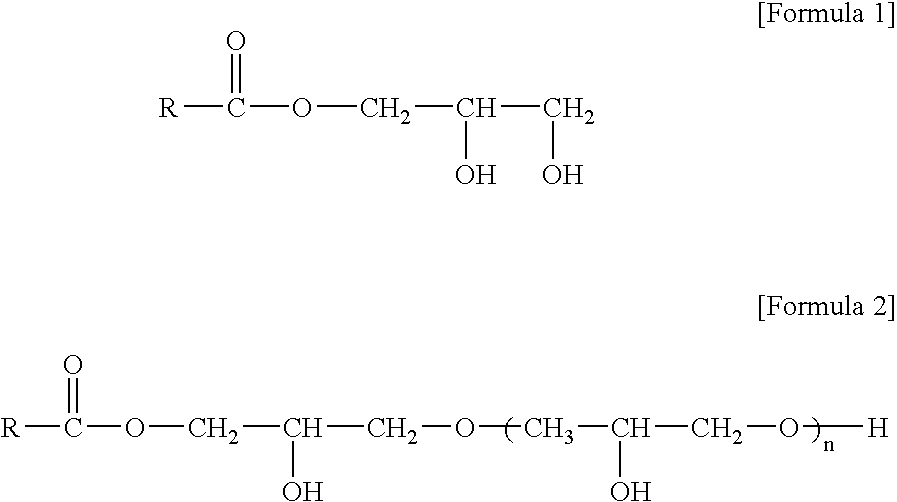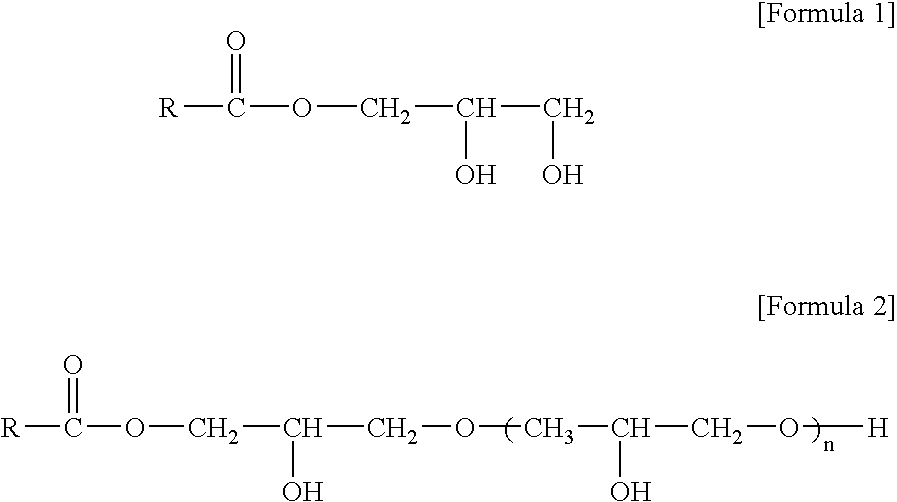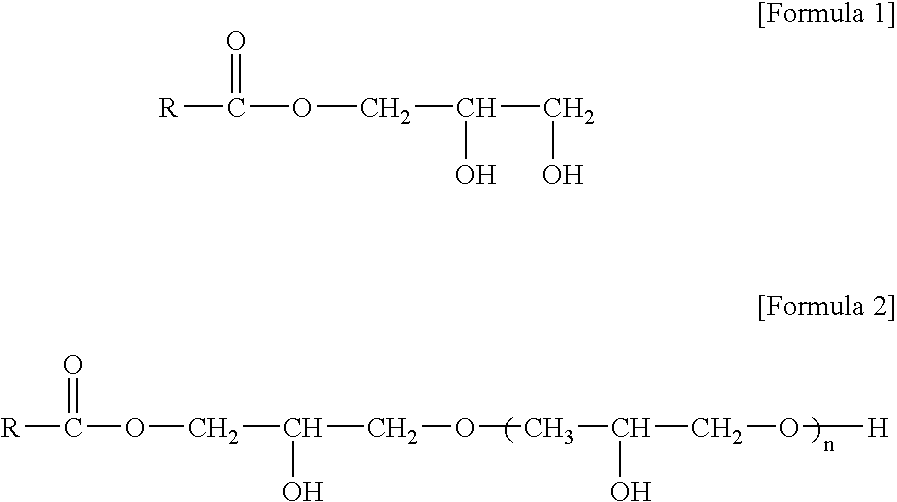Polyolefin fiber and method of producing the same
a polypropylene and fiber technology, applied in the field of polypropylene fiber and a production method, can solve the problems of difficult fiber production, unobtainable desirable processes, and limited use of known polypropylene, and achieve excellent carding workability, low foaming property, and easy production.
- Summary
- Abstract
- Description
- Claims
- Application Information
AI Technical Summary
Benefits of technology
Problems solved by technology
Method used
Image
Examples
example
Production of Compositions for Hydrophilic Polypropylene Fibers
[0039]Polypropylene resins, hydrophilic additives, and titanium dioxide (TiO2) that were used as essential components of the composition for polypropylene fibers, and spin finishes as optional components are described in the following Tables 1-1, 1-2, 1-3, and 1-4.
TABLE 1-1Polypropylene resinABComponentPolypropylenePolypropyleneresin powderresin powderMelt index (MI) [g / 10 min]1725Density [g / cc]0.90.9Isotactic index [%]9696NoteAntioxidant isAntioxidant is containedcontained(0.1 wt %)(0.1 wt %)
TABLE 1-2Hydrophilic additiveMain componentmonoglycerideTypeHLBGMSGlycerine90%Powder4.1monostearateGMLGlycerine40%Paste7.5monolauratePGPolyglycerideMonoglyceride: 40%Powder3.7[glycerine mono / di / Diglyceride: 30%tri-stearate]Triglyceride: 30%DGMODiglycerine40%Liquid6.0monooleate
TABLE 1-3Titanium dioxide (TiO2)Average particleComponentRefractive indexsize [μm]CAnatase titanium dioxide2.550.25DAnatase titanium dioxide2.520.45
TABLE 1-4Sp...
PUM
| Property | Measurement | Unit |
|---|---|---|
| wt % | aaaaa | aaaaa |
| wt % | aaaaa | aaaaa |
| refractive index | aaaaa | aaaaa |
Abstract
Description
Claims
Application Information
 Login to View More
Login to View More - R&D
- Intellectual Property
- Life Sciences
- Materials
- Tech Scout
- Unparalleled Data Quality
- Higher Quality Content
- 60% Fewer Hallucinations
Browse by: Latest US Patents, China's latest patents, Technical Efficacy Thesaurus, Application Domain, Technology Topic, Popular Technical Reports.
© 2025 PatSnap. All rights reserved.Legal|Privacy policy|Modern Slavery Act Transparency Statement|Sitemap|About US| Contact US: help@patsnap.com



